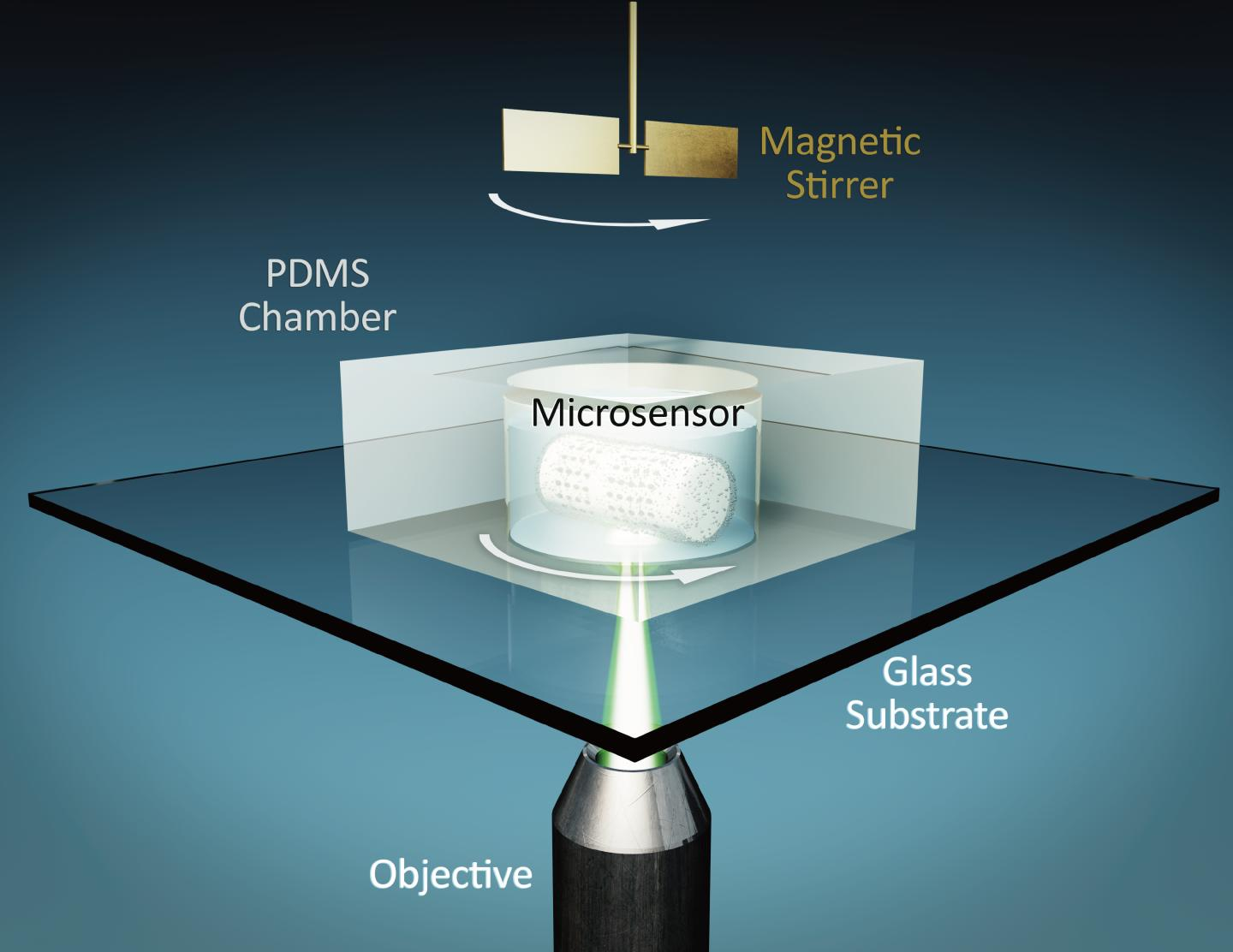Nov 19 2020
Early diagnosis of life-threatening diseases such as cancer is crucial to increasing the chances of patient survival. But such diseases are quite difficult to diagnose in their early stages since people usually do not develop symptoms and only trace amounts can be found in their bodies.
 These motorized sensors can speed up early-stage disease detection. Image Credit: Cockrell School of Engineering, The University of Texas at Austin.
These motorized sensors can speed up early-stage disease detection. Image Credit: Cockrell School of Engineering, The University of Texas at Austin.
At the Cockrell School of Engineering, scientists intend to make the early diagnosis of diseases easier, improving patient outlooks and reducing the burden on the medical system. They have developed a technique that involves using a nanosensor to accelerate the detection of trace amounts of biomarkers for early diagnosis of disease while ensuring higher levels of sensitivity.
It’s highly important to detect diseases early and accurately, and to do that you need to be able to find very low concentrations of biomarkers. And people want to know their results quickly and not have to wait around for hours or days.
Donglei (Emma) Fan, Associate Professor, Walker Department of Mechanical Engineering, Cockrell School of Engineering, The University of Texas at Austin
Fan, who led the study reported recently in the ACS Nano journal, believes her technique could support faster disease tests that can be performed at home or work, thus avoiding unnecessary visits to hospitals and doctor’s offices. In a hospital setting, accelerating tests allows medical personnel to complete huge batches of diagnostics within hours and not days.
Everyone can be their own nurse to some degree, and then if there are any problems they can talk to a doctor.
Donglei (Emma) Fan, Associate Professor, Walker Department of Mechanical Engineering, Cockrell School of Engineering, The University of Texas at Austin
Although super small sensors are crucial for disease diagnostics, they are hampered by many problems. The size of the sensor is inversely proportional to how responsive it is to the tiny molecules. However, a slower turnaround time is the tradeoff for sensitivity. If the sensor takes longer to connect with and identify molecules, the risk of contamination is higher, thus decreasing the accuracy of the test.
The goal of Fan’s sensing method is to solve the difficult problem of slow detection with ultra-small, highly sensitive sensors. The technique increases the speed of a test by four times than what is achieved with regular sensing techniques. Fan’s approach could reduce the time taken for a single detection from an hour or a couple of hours to just a few minutes.
What is crucial to that innovation is the motorizing of the sensor. When motion is added by spinning the device, the liquid sample moves around, rendering it faster for molecules and sensors to come into contact with each other.
The researchers have published their methodologies to enable other researchers and manufacturers to use the information to enhance their sensors. According to Fan, the technology could be applied to sensors any king and any instance of sensing molecules in a liquid solution, such as things like crime scene forensics to find DNA.
This project is in agreement with Fan’s research, discovery, and development of micro/nanomotors and machines. Her group created the first-ever technique for light-controlled electric nanomotors two years ago.
Fan added that more research is needed in this area and that the next step in the study is to speed up the motor while retaining control, which should further reduce the test turnaround time.
What we have demonstrated is not the limit. If we spin the sensor faster we can get even quicker detection.
Donglei (Emma) Fan, Associate Professor, Walker Department of Mechanical Engineering, Cockrell School of Engineering, The University of Texas at Austin
Journal Reference:
Guo, J., et al. (2020) Acceleration of Biomolecule Enrichment and Detection with Rotationally Motorized Opto-Plasmonic Microsensors and the Working Mechanism. ACS Nano. doi.org/10.1021/acsnano.0c05429.